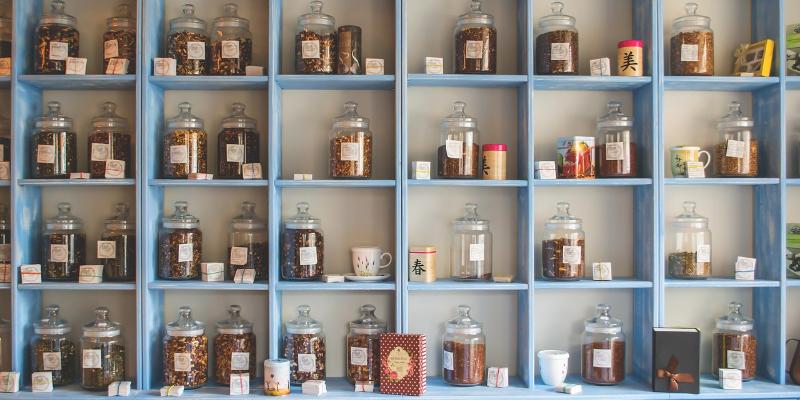There are no herbs which would burn body fat in a simple manner; however, due to their e.g. purgative, swelling, or metabolism-accelerating properties, they can assist in diets.
However, it should be remembered that in order for the diet to take proper course, the use of herbal products should be accompanied by rational feeding habits and physical exercises.
They have purgative properties
The alder buckthorn is one of the herbs with purgative properties. The bark collected from young stems is used. Its compounds irritate the walls of the bowels, stimulating their movement and the passing of the ingesta. In order for the compounds of the buckthorn to take effect, they must reach the large intestine, which takes several hours.
Both Egyptian and Indian cassia also have purgative properties. Their dried leaves are sold under the name of sennae. The sennae leaves have quicker effect than the buckthorn – they are active within 3 to 5 hours.
The rhubarb root also shows some purgative properties, but small doses may be used for stopping diarrhoea.
They assist digestion
The common dandelion root may be useful in assisting digestion, as it has cholagogue and diuretic properties and increases the secretion of gastric juices.
The digestion process is also accelerated by the common yarrow. The resource is the dried blossoming top of the plant. The yarrow contains bitter principles, which stimulate appetite and increase the secretion of gastric juices and bile.
St John's wort also stimulates bile secretion, however, in this case it should be remembered that the products based on this plant contain hypericin, which increases the sensitivity of the skin to the sun, therefore they should be avoided in the summer.
Viola tricolour also improves metabolism. It is mainly used for acne. The viola also increases the amount of excreted urine, thus disposing of harmful metabolism products.
They reduce appetite
The next group of plants used in dieting includes those with bulging properties. They give the sensation of a full stomach, which reduces appetite.
The diet supplement products include a fucus occurring in the Baltic Sea – the brown algae. The resource is the dried and powdered thallus.
The same group includes the plantago psyllium. Its useful parts are ripe and dried seeds. They are also rich in the mucous, which bulges in the digestive tract. They also contain cellulose, which has bulging properties and facilitates evacuation.
Thermogenics
Diet supplements also include thermogenics, i.e. components which, when digested and transformed into thermal energy needed to preserve constant body temperature, increase energy consumption.
Natural thermogenics include capsaicin, which is the alkaloid responsible for the spicy flavour of chilli peppers. Thermogenesis is also intensified by ginger, bitter orange, and pepper.
Be careful with herbs
Special care should be taken when using herbal diet supplements. The purgative plants should not be taken for more than a few days. They assist in the removal of the food remains in the intestines, which reduces body mass, but their extended use can lead to the disturbance of natural bowel peristalsis.
Diuretic herbs should also be taken with care, as their abuse may lead to dehydration.









Comments (0)